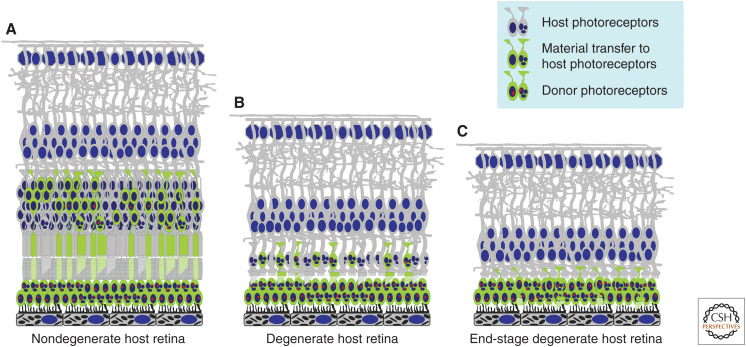Figure 3.
Schematic representation of photoreceptor cell transplantation into various models of retinal disease. Photoreceptor cell transplantation into (A) nondegenerate retina or into retina at early stages of degeneration can result in transfer of donor RNA and/or protein to host photoreceptors (material transfer) in addition to donor photoreceptor integration. Even in degenerate models that rapidly lose photoreceptors (B), cone photoreceptors can remain for extended periods. Following photoreceptor cell transplantation into these models, the presence of remaining host photoreceptors can be a confounding factor that complicates the interpretation of any therapeutic effects observed, either because of material transfer from the donor photoreceptor population or residual function from surviving host cells. In end-stage retinal disease (C), in which there are few remaining host photoreceptors, it is possible to make rigorous assessments of whether donor photoreceptors make functional connections with the remaining retinal circuitry. However, additional barriers to the integration of donor photoreceptors are present in this stage of retinal disease, such as increased gliotic scarring and inner retinal remodeling.

